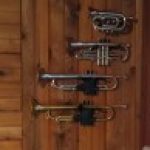WindWorks Trumpet Academy › Forums › WindWorks › How to differentiate clamping lips from engaging aperture corners
- This topic has 5 replies, 5 voices, and was last updated 4 years, 11 months ago by
 Daniel OLeary.
Daniel OLeary.
-
AuthorPosts
-
-
9 August 2019 at 2:12 pm #28870
calebjohnson333
ParticipantI am taking this course because I am incredibly frustrated about my range. It has never really been great, but in the past 6 months it has just been declining. Having super high range is not a priority of mine, but my range is so poor I am extremely limited in the tunes I can play cleanly. Despite hours of daily practice and thought I have not been able to change this.
Now I am a few weeks into this course and am extremely hopeful for where it can take me. It is fun rather than tedious, and I am loving it so far…I can feel a difference already. I notice that I had every bad habit from choking to kicking, and its been eye opening to have the course reveal this.
With the course, however, I struggle with what to engage when changing pitch. I am scared to consciously engage my aperture corners because I don’t know if I am also tensing my lips inside the mouthpiece. How to you recommend I differentiate between tensing the corners and the part that vibrates?
Thanks!
-
10 August 2019 at 1:08 am #28902
johnelwood
ParticipantSorry you’re frustrated, I was there and may wind up there again but have gone from having a range of G above the staff to now working towards double G; high C is pretty easy and I can control it better than I expected. This is in large part to MTM and the aperture corners.
Don’t overthink things, there probably aren’t absolutes with what you are doing with your lips when playing, it’s more of a spectrum. You want to engage the corners and avoid clamping the middle of the top lip–what I was doing.
It helps me to close my eyes, relax and think about the ahhhooooohhh–feel the muscles in your face as you say aaahhhooohh with your eyes closed. Feel how your top lip middle part feels, probably relaxed, that’s what you want to do.
The Maggio Monkey and Clarke’s advice to tighten the lips towards the mouthpiece as you ascend help me, although that advice from Clarke is what I misunderstood when I first started playing. Now, thanks to Greg, I realize the tightening is supposed to be that of a tightening from around the outside of the aperture around it in a circle around the air column.
I try to stay relaxed, listen closely to my sound for maximum resonance and try to use as little movement as possible–kind of a less is more thing. It’s easier than we think, it’s more about coordination of our muscles and the air than it is about strength of our muscles or power of our air.
My $.02 / hope that helps. Good luck–the more frustrated you are now, the more incredible it will feel when you “get it”, which you will if you stay with it and keep thinking, listening / watching Grey’s videos and experimenting patiently. It’s only a matter of time.
-
10 August 2019 at 2:13 pm #28972
johnelwood
Participanthttps://www.youtube.com/watch?v=A4ONDJWoaAEThis is the best explanation I’ve ever seen. Hope it helps you.
-
13 August 2019 at 7:21 am #29171
 Greg SpenceKeymaster
Greg SpenceKeymasterHey there Caleb, welcome to WindWorks!
At this stage, I want you go between PROCESS and RESULTS practice. The PROCESS sets the desired FEELING and the RESULT provides the desired sound.
If you find the FEELING of freedom of airflow diminishing or the sound losing centre then you are probably beginning to manipulate.
The more you reinforce the PROCESS basics, the more desirable it will become and the more equipt you are to spot negative tension when it arises.
I am happy to have a quick look at you on SKYPE to see what is going on. Just email me through the contact page.
Cheers,
Greg -
16 August 2019 at 3:45 am #29324
cals
ParticipantNice discussion. Greg: I enjoyed your rant. I keep cycling back here. It is a slow re-education of my mind. I have to do a little, really absorb that and then come back again.
Recently, I can sort of envision the aperture becoming smaller and that really helps. The reinforcement of “from the sides” and the corners and the “mmmmmahhhhoooo” then keeps it clean. -
27 August 2019 at 11:58 am #30453
 Daniel OLearyParticipant
Daniel OLearyParticipantI eventually managed to sort this quandary out by sluring ,position 1 , c to g quarter note quaver harmonic slurs alternating each quaver between just vertacle engagement with just lateral engagement until I could actually do that rather well and it didn’t take long.
Something else related to this is that I practice daily begining and ending harmonic slurs with a long tone on BOTH the bottom and top note and ending on the top note with as clear and centered a note as the bottom note.
Which is to say that if the top note is getting squeezed doing faster higher quavers , long tones at the top at the end of quavers helps keep me on track dodging the dreaded clamp .
-
-
AuthorPosts
- You must be logged in to reply to this topic.
Recent topics
-
Question of Curiosity – To Teeth or Not To Teeth
by
clawsonk123
1 month, 3 weeks ago -
1.O / 2.0 routine
by
jice.gif
2 months, 3 weeks ago -
Abdominal surgery and time off the trumpet
by
DQ
9 months, 3 weeks ago -
Allegro or Presto Practice Routine
by
djm297
10 months, 2 weeks ago -
Tongue lock – Throat lock
by
Ivo Carrabs
11 months, 1 week ago
